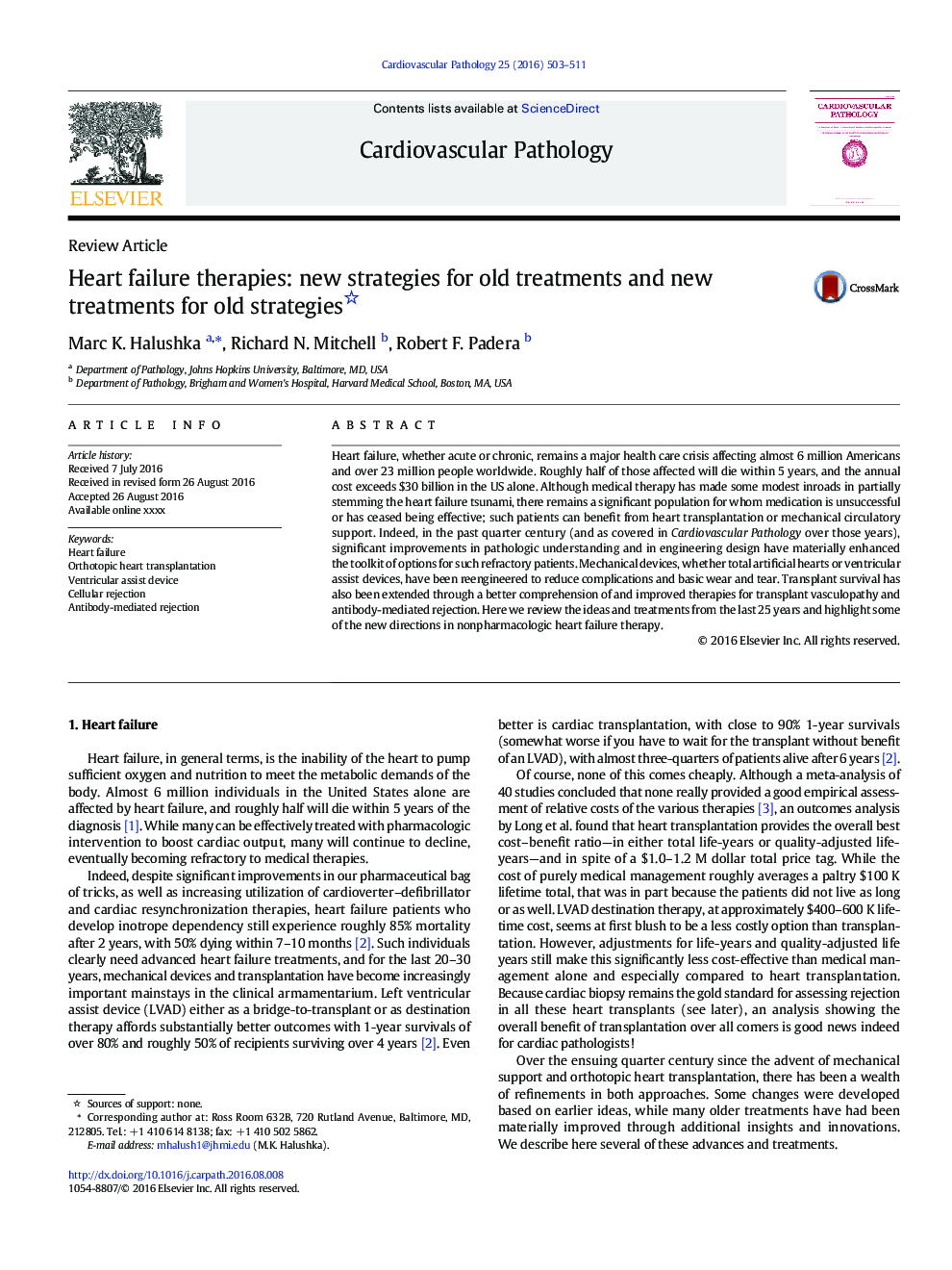| Article ID | Journal | Published Year | Pages | File Type |
|---|---|---|---|---|
| 2898594 | Cardiovascular Pathology | 2016 | 9 Pages |
Heart failure, whether acute or chronic, remains a major health care crisis affecting almost 6 million Americans and over 23 million people worldwide. Roughly half of those affected will die within 5 years, and the annual cost exceeds $30 billion in the US alone. Although medical therapy has made some modest inroads in partially stemming the heart failure tsunami, there remains a significant population for whom medication is unsuccessful or has ceased being effective; such patients can benefit from heart transplantation or mechanical circulatory support. Indeed, in the past quarter century (and as covered in Cardiovascular Pathology over those years), significant improvements in pathologic understanding and in engineering design have materially enhanced the toolkit of options for such refractory patients. Mechanical devices, whether total artificial hearts or ventricular assist devices, have been reengineered to reduce complications and basic wear and tear. Transplant survival has also been extended through a better comprehension of and improved therapies for transplant vasculopathy and antibody-mediated rejection. Here we review the ideas and treatments from the last 25 years and highlight some of the new directions in nonpharmacologic heart failure therapy.
